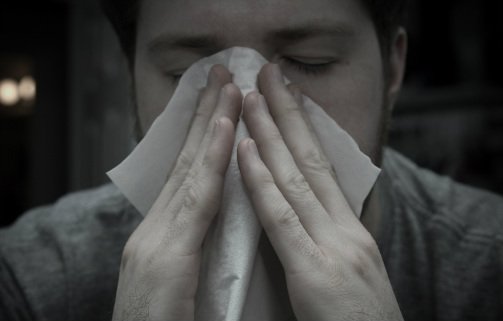 As evidenced by our previous blog posts on food allergies, it is clear that allergic diseases, which include food allergies as well as atopic dermatitis (eczema) and allergic rhinitis (hay fever), are on the rise – especially in developed countries. Given the improvements in health care and sanitation in recent decades, why would this be? Many researchers believe that we are getting too squeaky clean for our own good. Although changes in lifestyle and public health infrastructure have decreased the burden of infectious disease in industrialized settings, this triumph coincided with a rise in allergic and autoimmune diseases. The hygiene hypothesis proposes that these two trends are related; a lower incidence of infection in early childhood leaves the naïve immune system hypersensitive to allergens. This notion was first proposed by David Strachan, who observed an inverse correlation between hay fever and the number of older siblings in a cohort of 17,000 British children born in 1958. Strachan surmised that children who had more “unhygienic contact” with older siblings, either directly or prenatally from their mother and her contact with her older children, may prime the immune system and confer additional protection against hay fever later in life. Similarly, a recent cross-sectional study of 18,000 Swedish adults aged 16-75 found that persons who lived on a farm during their first 5 years of life were less likely to develop hay fever as adults. This suggests that early exposure to a rural, natural environment – including farm animals and hay lofts – could have a protective effect against hay fever later in life.
The increase in allergic diseases has also been attributed to the fact that pregnant women aren’t eating enough fish. The U.S. Environmental Protection Agency and the Food and Drug Administration issued advice for pregnant women (or those likely to become pregnant) to limit their seafood consumption to 2-3 servings per week, due to concerns regarding the detrimental effects of mercury on the fetus. However, as we discussed in a previous blog post, marine fish are also a natural source of omega-3 (N-3) and omega-6 (N-6) polyunsaturated fatty acids (PUFA), which are crucial for development of the immune system. While pregnant women may limit their fish intake to protect their child’s developing brain, they may also be consuming too few N-3 and N-6 PUFAs, which could adversely influence the immune system and contribute to the rising prevalence of allergic disease. It may be that infants are exclusively breastfed for too long. The World Health Organization (WHO) recommends exclusive breastfeeding for at least 6 months in order to provide ideal nutrition for proper growth and development. Although this practice provides clear benefits for length and weight gain, especially in developing settings where resources are limited, delaying complementary foods until 6 months of age may actually increase risk of immune disorders. Animal models suggest that exposure to common allergens during an early critical window of development may be essential towards developing tolerance of those allergens. Further, this time frame may also coincide with the establishment of healthy gut bacteria, which is essential to promoting allergen tolerance. The obesity epidemic. The past two decades has seen a parallel uptick in both obesity and allergic disease, hinting at a possible link between the two. Prospective population-based studies have observed a direct association between higher body mass index (BMI) and risk of asthma in children and adults. A weight loss trial conducted among obese adolescents found that lowering BMI led to improvements in lung function, suggesting a causal relationship between excess weight and risk of some allergic disorders. How might obesity lead to allergies? As summarized in a recent review, the link may depend on the specific allergic disease. In airway allergies, obesity may affect the mechanics of lung function; in allergies like eczema or hay fever, inflammation may be the cause. Obesity and allergies may also be connected by shared risk factors including poor diet, genetics, and a sedentary lifestyle. So, is the solution to allergies to lose weight, stop washing your hands, eat lots of fish while pregnant, and introduce solid foods to your newborn as early as possible? Not quite. As with the case of sunscreen and rickets, public health victories are sometimes met with unintended consequences. Further research to identify the ideal balance between too much and too little allergen exposure will fine tune clinical recommendations.
0 Comments
Your comment will be posted after it is approved.
Leave a Reply. |
©2017 WeighingInBlog. All rights reserved. 401 Park Drive, Boston, MA




 RSS Feed
RSS Feed

